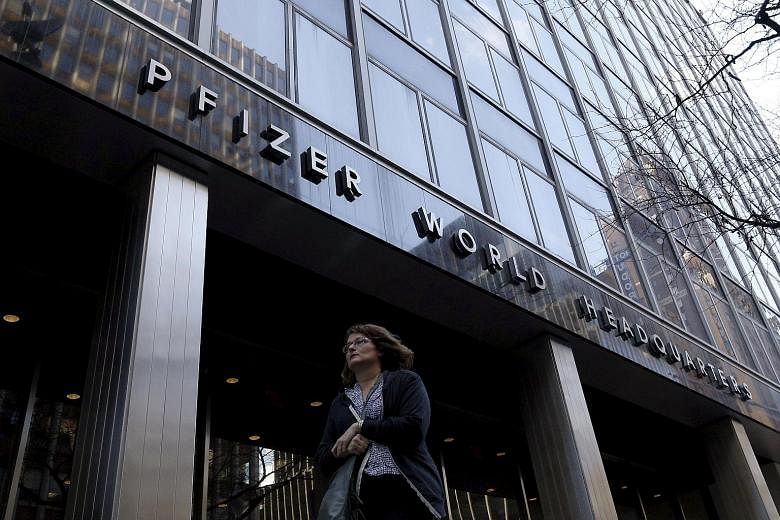When it comes to deal-making, the healthcare industry defied belief in 2015 with US$605 billion (S$867.7 billion) of takeovers. While 2016 may be a good year, it is unlikely to beat that record.
"We entered 2015 with what I would characterise as almost a perfect M&A (mergers and acquisitions) environment: a generally stable economy, lack of volatility in the equity markets, low interest rates, tonnes of cash on companies' balance sheets," said Mr Jeff Stute, head of healthcare investment banking at JPMorgan Chase & Co.
Some of the most active acquirers, like drugmaker Pfizer, are going to be busy digesting purchases instead of hungering for new ones. Pfizer last year agreed to buy Allergan, itself a prolific merger partner, for US$160 billion.
And Valeant Pharmaceuticals, another major player, is busy resetting after a scandal in its drug distribution channels.
The health insurance industry has largely consolidated, after Anthem and Aetna struck multibillion-dollar deals with smaller rivals Cigna Corp and Humana, respectively.
Then there is the public backlash against the rising prices of pharmaceuticals. That has weighed on the valuations of drugmakers as investors question whether companies will be able to continue to charge high prices for treatments.
"You see more people talking about cost-containment - that's another theme that only seems to be growing," said Mr John Fraunces, co-portfolio manager of Turner Medical Sciences Fund. "I generally think as we see a more sober environment, we'll see the valuations of the deals come down."
The tone for the year's mergers and acquisitions will be set next week, at the JP Morgan Healthcare Conference. The event, which is entering its 34th year, has been the genesis of many past acquisitions. And while some of the top players may be busy, there are still shoppers with big money to spend.
Gilead Sciences had US$14 billion in cash and cash equivalents at the end of the third quarter. Since then, the California-based biotechnology company has invested US$725 million to buy a stake in Galapagos NV, which is developing a treatment for rheumatoid arthritis and other inflammatory diseases. And it still has cash to spare.
Johnson & Johnson also has plenty of firepower, despite announcing a US$10 billion share buyback programme in October.
And Shire is in advanced talks for a potential US$32 billion cash-and-stock deal for Baxalta, people familiar with the matter have said.
Investors are also watching the initial public offering (IPO) market.
Last year started off at a robust pace, as 53 firms in biotechnology, pharmaceuticals and healthcare products and services priced a total US$4.27 billion worth of public offerings in the first half of the year. That slowed in the second half, with 34 IPOs raising US$3.18 billion.
Despite that brief lull, there is still a market for new companies to go public.
At least six healthcare companies - Editas Medicine, Corvus Pharmaceuticals, Audentes Therapeutics, Reata Pharmaceuticals, Tabula Rasa Healthcare and Syndax Pharmaceuticals - all filed for IPOs on Monday, the first day of trading in 2016.
Yesterday, India's Narayana Hrudayalaya, which operates a chain of hospitals, surged more than 38 per cent in its stock market debut, as investors bet on growing demand for private healthcare services in Asia's third-largest economy.
The company's shares opened at 291 rupees and rose to as high as 345.65 rupees in a weak broader Mumbai market, against the IPO issue price of 250 rupees a share.
Narayana had raised US$92 million last month via the IPO.
India had 11 hospital beds per 10,000 population as of January 2013, among the world's lowest.
The global average stands at 27 beds, which leaves significant scope for bed additions over the next few years, according to a research report by brokerage IIFL.
Narayana will spend about one billion rupees (S$21.5 million) over the next three years on setting up four hospitals in India.
"As long as the quality is there, you will have investors," said Mr Brian Halak, a partner at venture capital firm Domain Associates.
"I think valuations will be a little more muted and the number of companies that go public will be a little smaller, but I think we will have a reasonable amount."
BLOOMBERG, REUTERS

